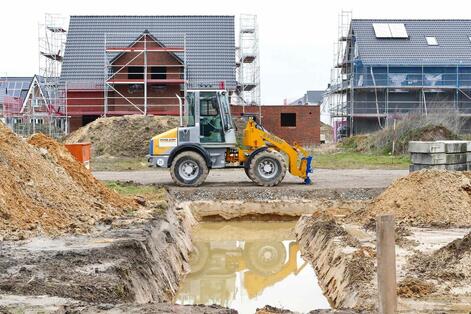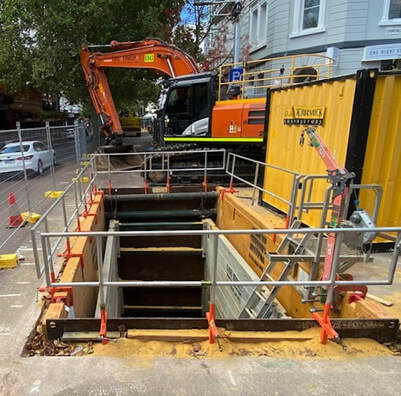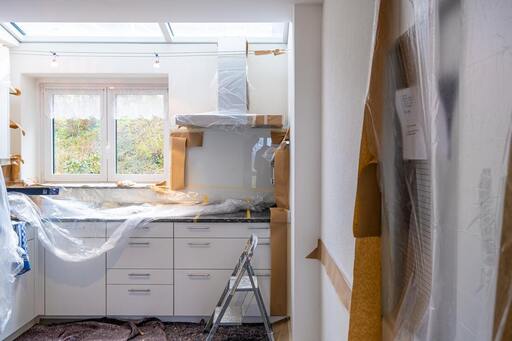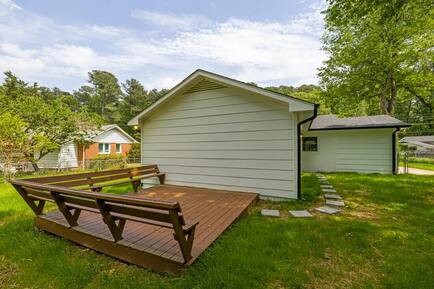|
Ground has to be excavated to level the house site for foundations, for basements, pools, and to install services such as water pipes, storm water pipes, electrical cables and sewer (wastewater) pipes. Sometimes, in the case of basements and sewer and storm water pipes these excavations are deep. See Levelling an area for your house Different ground conditions impact excavations for your homeRemember when you were a child playing on a sandy beach. High up on the beach where the sand was dry if you dug a hole it filled up with sand as quickly as you removed it. The sides of the hole kept falling in. Closer to the sea the sand was wetter so you could dig a hole fairly deep and the sides stood up vertically. But as the sand dried out the sides of the excavation started to fall in. Of course, as soon as you stood near the edge of the excavation the sides collapsed and you fell into the hole. When you tried to dig a hole right at the edge of the sea where the waves were, the excavation filled with water and the sides of the hole fell in immediately they were wet. Now there’s a huge variety of different ground conditions which you could encounter on your building site. These could range from solid rock, rock that is heavily fragmented, ground containing boulders, hard well compacted ground, loose ground, and sand. Excavating in hard solid rock it’s possible to have vertical sides to the excavation and the sides won’t fall in. Excavating in sand will often have a similar result to what you encountered on the beach, and the sides usually won’t stay vertical for long, and usually only up to a depth of half a metre (eighteen inches). Harder ground could stand vertically for a couple of metres (six foot), but the sides can collapse if water enters the excavation – water running into the excavation will erode the sides, and water sitting in the bottom of the excavation will saturate the ground on the sides eating into the ground, eventually causing it to collapse. How big will your excavations be?Of course ground that collapses into the excavation results in the excavation becoming larger, and it also requires the ground to be cleaned out of the excavation again, which is time consuming. But if the excavation is more than a metre and a half deep (four-and-a half feet) and somebody is working in the excavation then they could be injured by the falling debris and even buried alive. Unfortunately there are frequent reports of construction workers being killed when the sides of trenches collapsed on them burying them. #constructionsafety Therefore by law (note: check your local safety requirements), and for practical purposes, the sides of all excavations (other than in solid rock) cannot have vertical sides more than one and a half metres (four-and-a half feet). Above that, the ground must be battered back (sloped) to about a thirty or forty-five degree slope, or the sides of the excavation should be in steps or benches (see sketch below). Of course where there’s only sand the sides of the excavation can’t be vertical and will probably be at a forty-five degree slope from the base of the excavation. What this means is that the excavation at the top surface ends up being much wider than it has to be at the bottom of the hole. Imagine a three metre (nine foot) deep trench that is six hundred millimetres (two foot) wide at the bottom. In sand the excavation could be over six metres (eighteen foot) wide at the top, or in hard ground the excavation could be three metres (nine foot) wide. Not only must this extra material be excavated, but once the pipe is installed, or the wall built, this material must be put back, and compacted properly. What this means is that excavating a three metre (nine foot) deep basement isn’t going to cost 50% more than excavating a two metre (six foot) deep basement, it’s probably going to be double the cost. And, excavating a three metre (nine foot) deep trench could cost three or four times the cost of excavating a two metre (six foot) deep trench. But remember, as discussed when you were on the beach and you stood on the edge of your excavation the sides collapsed, so we have the same on our construction sites where excavations next to roads or below building foundations could easily collapse because of the extra weight on the sides of the excavation from the vehicles and the building. Of course making excavations wider to accommodate the depth is often not an option, there simply isn’t the space. In these cases the sides of the excavations have to be held back. For trenches this could involve shoring the sides with timbers or special structures, or even sinking caissons (rigid boxes of timber, steal or concrete, strong enough to hold the ground back) into the ground and excavating the ground out between the walls of the caisson (see photo below). Deep basements, or basements excavated in sand may require walls to be constructed from continuous steel sheet piles or concrete piles which are driven into the ground first. This establishes an enclosed space around the outside of the basement, and the ground can then be excavated from within this enclosed area (see photo below). When the basement is excavated the basement walls can be constructed against this ring of piles. #excavation #constructionexcavation Separating good ground from poor groundWhenever excavating care should be taken to separate the good material which is suitable to use for backfilling from unsuitable material. Invariably the ground varies the deeper we excavate. The upper layer could be topsoil and contain vegetation Below the topsoil could be several layers of ground. Some material could be unsuitable for backfilling and may have to be disposed of. Some material could be okay for filling layers deeper down, while the best material should be kept for filling the uppermost layers of trenches and against walls. Allowing working space in excavationsWhen excavating for foundations or basements. it’s often necessary to make the excavation larger than needed so that there’s space in which to work and to construct the foundation or wall. The working space required usually varies between six hundred and one thousand millimetres (two to three foot). The area excavated for working space must be filled with ground which is compacted when the wall is complete. If the concrete is to be cast against the sides of the ground or soil then the excavation should be done as neatly and accurately as possible. If the excavation is larger than it should be then more concrete will be required to fill the space of the extra ground removed. If the excavation is too small then the foundation or wall won’t fit and excess ground must be removed to make the excavation the correct size. This will create delays and additional costs. Pipes in rockUsually storm water and wastewater pipes (see Wastewater pipes and home construction)can’t be placed directly on rock or hard ground and require a layer of soft sand 50 to 150millimetres (2 to 6 inches) thick under them. This allows for the pipes to be placed at the correct height and it means that the pipe is supported evenly along its length without lumps and bumps of rock which could damage the pipe. ConclusionDigging a hole for house foundations, or to install pipes and cables to your new home may seem easy. But it can be dangerous when the excavation exceeds 1.5m (4 feet) deep ( trench collapses are often fatal). Not excavating the right size may mean that you have to get the excavator back to enlarge the hole. Digging too big results in extra costs. Mixing good quality ground with poor ground will result in everything being thrown away and you may have to get in new good material to fill in trenches when pipes are installed and to fill against the foundations - all at additional costs. #homeconstruction #homeconstructiontips Other useful articles: Clearing way for your new home Understanding plumbing when planning a new home or renovation.  This is an extract from the author's book 'An Introduction to Building and Renovating Houses: Volume 1 Hiring Contractors, Managing Construction and Finishing Your Home'. © 2022 This article is not to be reproduced for commercial purposes without written permission from the author. Want to learn more about designing, renovating and building houses? Paul Netscher has written 2 easy to read books 'An Introduction to Building and Renovating Houses - Volumes 1 and 2'. An Introduction to Building and Renovating Houses Volume 1 deals with Hiring Contractors, Managing Construction and Finishing Your Home. and Designing your ideal home Volume 2 deals with Finding Your Ideal Property and Designing Your Dream Home. ("Great for those that DIY. Very helpful in home renovations!" said a Reader on Amazon.com 5*****) These books are available from Amazon and other online bookstores in paper and ebook.
0 Comments
Ideas to bring new life to your home"From a thorough declutter to refreshing the look of your home, we got it all covered." As the snow starts to melt, the ground warms, and nature comes back to life, we know that spring has arrived. And when seeing so much rejuvenation, it’s understandable to get the urge to renew something about your home. However, after passing through a long sedentary winter, you might have trouble knowing where to start with your renovation. As a result, we thought of some simple home improvement ideas that you can try out in your home this spring. From a thorough declutter to refreshing the look of your home, we got it all covered. So let us see how you can use these spring renovation ideas to freshen up your home this season. #springrenovationideas #homeimprovementideas Letting light into your home"Increase the amount of natural light in your home" After months of long nights and limited sunlight, you and your home need extra light. As a result, one of the first things you should do is increase the amount of light in your home. Start by keeping the drapes and blinds open or perhaps taking them down till the summer. If there is too much light in a room, you can replace thick and dark curtains with lighter ones. Choose curtains made of light yet light-filtering fabrics, such as linen or cotton. That way, you can control how much light enters the room and balance it so that it doesn't become bothersome. At the same time, if you don’t have enough windows in your home, now could be the perfect time to add more. Additional windows can not only let more natural light in but will also make your home look more beautiful. And if you ever think of selling your home in the future, those added windows could help you increase the value of your home. "Installing more windows in your home will help you light it and refresh it more efficiently" Let your home breathe After ensuring that your home has enough natural light, you must also provide it with enough air. As a result, open the windows and refresh the air in each room. Even if the air is still chilly, ventilating the rooms will kick out the stale air and allergens that gathered over the winter. Also, leaving the windows open for one hour each day will make your home smell fresh and springy. In addition to ventilating the rooms by opening the windows, you can also have the HVAC system checked. You probably used it throughout the winter, and you should ensure that it is in perfect running condition for the summer. Therefore, check all the air filters, clean them, or change them if needed. Also, if the unit is old, you could use this opportunity to change it and add a newer system. Smart thermostats, for example, are available in current HVAC systems and allow you to control the temperature in your home much better. New HVAC systems are also usually more energy efficient - helping to lower your power bill which will offset some of the costs for the new HVAC. In addition, you can access the system through an app on your smartphone. That way, you can heat or cool your home while still on the road on your way home. Declutter and organize your home"Create more space for the things you use" Your home is getting enough air and light now, but it might miss space. In that case, you might have a problem with clutter. As a result, now is a great time to do some spring cleaning and get rid of all the unnecessary stuff you gathered. To begin with, go through your home and see what is causing clutter. Look in every corner, drawer, and closet and observe what items you haven't used in a while. Donate the clothes you don't wear, throw out outdated food and toiletries, and store items you rarely use. For instance, you can rent a storage unit and place your valuable and fragile items like glassware and seasonal ornaments there. But, you must ensure that your things arrive at the storage unit undamaged by carefully packaging them. Use plenty of cardboard boxes, bubble wrap, and packing paper to ensure the safety of sensitive pieces during transport and storage. After you get all the unnecessary items out of the way, you can estimate how much space you have or additionally need. That is when you can use another one of the spring renovation ideas that can help you freshen up your home, which is adding more shelves. Place shelves on empty walls, above the furniture, and even in your closets if needed. That way, you will have more room for items that crowd your drawers, work desk, or cupboards, and you can keep everything organized. "Shelves are a great way to organize your items." Add a fresh coat of paint to your house Repainting the walls inside and out is a great way to freshen up your home during a spring renovation. It can help you get rid of the stale feeling that your home can get throughout the winter, and you can also use color to make your home feel bigger. Paint your interior walls white, and they will reflect light, making the rooms seem more spacious. If you think that white is hard to keep clean, opt for lighter shades of gray and cream. You may also use orange, yellow, or red to make your rooms appear more joyous and warm if you want to go for a more daring style. In addition, you can use wallpaper to give texture to a room or give it a theme. For the exterior, you can choose to paint the house gray, a warm blue, or a natural shade of green. Pastel colors are also a good choice, with butter yellow, peach orange, or lavender being among the favorites. However, be cautious while selecting a paint color for the house. It should be in harmony with the colors of other homes in your area and with the environment. Update your outdoor space Now that the weather has started warming up, you might want to spend more time outdoors. Therefore, it's time to update your outdoor space and prepare it for family gatherings. First, clean your deck and porch, make necessary repairs, add a waterproof treatment, and repaint the woodwork. Then, clean the yard of debris, cut outgrown branches, and mow the lawn. If you have a garden, pluck out the weeds, remove the mulch, and rake the soil. You can also set up new planters and garden beds and create a composting area. "Create a place where you and your family can enjoy relaxing sunny days outside" Around the house, you can clean the driveway, paths, pool, and gutters. If you have a fence, repair any damage done by water or snow, treat it and repaint it. When you finish cleaning and preparing the outdoor spaces, you can add some furniture to the deck or make an outdoor kitchen, patio, or gazebo. There, you and your family will be able to enjoy many sunny days outside, making barbecues or having picnics. "Building an outdoor space where you can spend time with your friends and family can be a good addition this spring." Create a new home this springIf you want to freshen up your home, you can always use some of the spring renovation ideas we suggested. They are simple to implement and can make your house feel and look brand new. In addition, your home will become a springtime haven where you and your guests will love spending time. #homeimprovement #homerenotips AuthorAlissia Brown is a design enthusiast and an NYC Mini Storage consultant. She specializes in home remodeling projects and storage unit advice. Project management, customer service, communications, and event planning are among some of her talents. Alissia spends her free time cooking, traveling, and writing on her blog. Want to learn more about designing, renovating and building houses?"These books are packed with useful tips and insights to help make your home renovation project a success" Paul Netscher has written 2 easy to read books 'An Introduction to Building and Renovating Houses - Volumes 1 and 2'. An Introduction to Building and Renovating Houses Volume 1 deals with Hiring Contractors, Managing Construction and Finishing Your Home. and Designing your ideal home Volume 2 deals with Finding Your Ideal Property and Designing Your Dream Home.
("Great for those that DIY. Very helpful in home renovations!" said a Reader on Amazon.com 5*****) These books are available from Amazon and other online bookstores in paper and ebook. Why do people choose accent walls? The answer is pretty simple - because it attracts your attention and stands out from the rest of the room! If you paint an entire room in the same shade or pattern as the rest of the house, it will look pleasant with that synchronisation. However, if you go with Accent walls, they give your space an exceptional decorative flair that remains missing from other styles. Accent walls add brilliant colours, designs and intrigue to highlight their space. There are also specific tiles called Accent tiles that give you the chance to make your space immensely fashionable with their unique patterns and designs. While creating a custom wall for your home may sound expensive, the latest technological advancements have significantly reduced the cost and effort of setting up such entities. In that light, here are some stylish ways to create an accent wall and customise your space. #accentwalls Painted Wall or Mural Why stop at just a different shade of colour when you can do so much more in the same realm! You can always go for patterns on the paint like spheres, stripes, floral or even murals. If you are a person who highly admires art and wants to include art into the home décor in any way possible, a mural accent wall would definitely be your best foot forward. Note: A mural is simply a piece of artwork directly applied on the wall like wallpaper. 3D Tiles Go a step ahead and opt for longevity and durability by opting for premium quality 3D tiles. With multiple options in every possible tile type or pattern, 3D tiles would be an absolute fit for an accent wall. The best part? 3D tiles can be used on the wall as well as the floor. So if you like a particular design, you can always use that elsewhere in the décor. From minimalist designs and florals or beachy or mountainous patterns, 3D tiles have all. The easy upkeep of the tiles makes it surpass other materials while ensuring that you get those epic 3D effects for years. Headboard Wall It's time to experiment with your headboard wall that usually gets ignored. However, you can make full use of this underrated method to make your walls more interesting. A great thing about headboard walls is that they allow you to try out patchwork using fabrics that you generally won’t use on plastic or wooden squares. When put on the wall, it makes for an exciting change from the regular and pale wall. Curtains It’s completely understandable if you are in no mood for any major changes in the space. In such cases, you might go ahead with minor but impactful ones, such as the curtains. Instead of going for the plain shades, you can go wild with the colours and designs here! Go the vintage way by trying either single panel, double panel, a liner, valance or even a window treatment set – anything that makes your space stand out. Mirrors Another underrated yet one of the most impactful choices for an accent wall is the mirrors, which dramatically enhance the aesthetic of a room. Instead of having a painted wall or buying wallpaper online, you can go for a full mirror wall as your headboard feature wall of the bedroom. While they could be a bit on the expensive side and challenging to maintain, they are worth every effort and patience! Colourful Wallpaper Want to try something with your kitchen backsplash? Go for wallpapers! The best part about the backsplash is that you can personalise it the way you want without making it excessive. Make that your little creative accent wall by adding a pop of colour with wallpapers, or add some floating wooden shelves to the party, and you have a great kitchen space you can talk about! Felt Stickers Children’s rooms are a great space to go creative, especially with their likings. If your child loves space, a superhero, or even a cartoon, you can bring that closer home by using felt stickers to make accent walls. It’s as simple as just peeling and pasting on the wall. And while they are always in demand by children, even adults might fancy them and channel their inner child! Combined Textures With a significant portion of the world moving towards Work From Home, a dedicated space for your work or pleasure becomes an issue. However, you can play smart by adding more than one element to your accent wall that will come in handy for work as well as pastime. You can elevate one side of the wall with either wooden panelling or a mural, or even tile accents while keeping the rest as it is. This gives the impression of two separate rooms in one. Showcase Wall If you passionately love something and feel you can get that on the wall, this is your chance. Love books? You can use vintage book covers on the wall or a sharpie to make a classic accent wall stand out. You can even dedicate an entire wall to framed photographs of your family, friends, and people that matter to you. These aspects make the space more intimate and authentic for a fantastically self-reflective accent wall design. In fact, you can also display any heirlooms like broken plates or bowls that will really add a quirky and vintage vibe to the wall. Accent walls can be your blank canvas to make your own design and art. This is where you can incorporate what you love, your ideas and make the space your own. If you are going for something solid and long-lasting, you can always go for tiles. However, any method works as long as you love it for long! The methods mentioned above give more aesthetics and fewer hassles to the maintenance. What else could you want then! #homeimprovementtips #homeimprovementideas #homedecor AuthorIsha Tandon has worked within the architecture and interior design industry as a flooring consultant expert – specializing in tiles, stones, and terrazzo. She has worked with Orientbell Limited, a leading tile manufacturer in India, as a product development manager in the design team and has recently joined the marketing team as their digital content expert. Want to learn more about designing, renovating and building houses?"Great for those that DIY. Very helpful in home renovations!" said a Reader on Amazon.com Paul Netscher has written 2 easy to read books 'An Introduction to Building and Renovating Houses - Volumes 1 and 2'. An Introduction to Building and Renovating Houses Volume 1 deals with Hiring Contractors, Managing Construction and Finishing Your Home. and Designing your ideal home Volume 2 deals with Finding Your Ideal Property and Designing Your Dream Home.
("Great for those that DIY. Very helpful in home renovations!" said a Reader on Amazon.com 5*****) These books are available from Amazon and other online bookstores in paper and ebook. |
AuthorI’m a construction professional, author of several successful construction management books, and a home owner. I’ve made mistakes in construction management, I’ve seen others make mistakes, but importantly I’ve had multiple successful construction projects and I’ve learned from the mistakes. I want to share these lessons and my knowledge with you. Also available from:
Amazon Au, Amazon DE, Amazon ES, Amazon CA, Amazon IT, Amazon FR, Amazon NL, Amazon India and 'An Introduction to Building Houses - Volume 2 Finding Your Ideal Property and Designing Your Dream Home'
Archives
July 2024
CategoriesWe welcome genuine comments, especially comments that add additional information to the subject matter in the article. We however reserve the right to remove inappropriate comments, which includes comments that have nothing to do with the subject, comments that include inappropriate language, and comments that are an advertisement for a product or company, or which include an advertising link. Comments must be in English. We will not enter into discussion on why a particular comment was removed.
|






















 RSS Feed
RSS Feed


